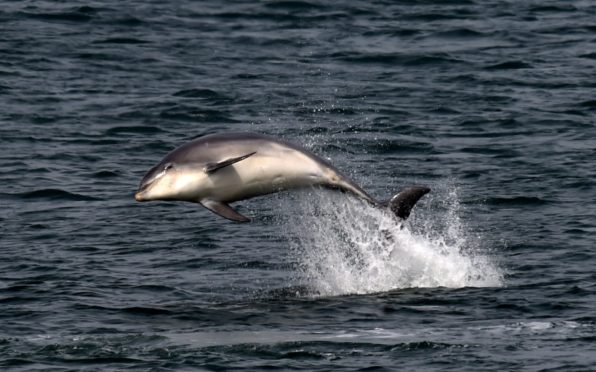Studying the DNA differences between whales and cows could be key to protecting marine mammals from human threats.
In a new publication in the scientific journal Conservation Physiology, academics from Aberdeen University, along with colleagues from the Technical University of Denmark (DTU), have contrasted the metabolism of sea-faring mammals against their relatives on dry land.
Davina Derous, from Aberdeen University’s school of biological sciences, explained that because of the unique adaptions marine mammals have developed since they diverged from those living on land millions of years ago, they face different challenges brought about by disturbance from humanity.
She said: “Many people may not realise that dolphins and whales are close relatives of land mammals such as cows and sheep.
“Around 53 million years ago their ancestors re-entered the oceans and evolved to become the fully aquatic mammals we know today.
“It is not just the shape of their body that changed during these adaptations to marine life, but also their physiology.
“Scientists now have access to many genomes of whales and dolphins and therefore we could study how these changes accumulated and whether changes across many genes led to changes in the way their metabolism works.
“We did this by comparing the sequences of genes associated with energy metabolism in dolphins and whales and in their land-based relatives.
“We found that their genes have adapted to cope with a low glucose diet; to overcome the damaging effects caused by the lack of oxygen during diving, and that the way fat storage signals energy state to the rest of the body differs drastically compared to land mammals.”
Ms Derous explained the thick layers of blubber that whales and dolphins have developed means they access fat storage in a different way to their cousins on land.
The Aberdeen University researcher said the impact of man’s activities at sea like shipping, tourism, offshore work and naval exercises could have an even more complicated impact on gentle marine mammals and their ability to bring up young than previously thought.
She added: “Dolphins and whales have evolved to have this really thick layer of fat right under their skin called blubber and the way they use up that fat storage when food is limited might be completely different to land mammals.
“That is because blubber also functions as a layer of insulation in the cold sea water and to help them float and dive, and therefore they cannot use all of it as an energy fuel.
“They might have what we consider a normal amount of fat, but this might not reflect what is happening below the surface on a cell level.
“We conclude that the way reproductive investment is going to be affected by foraging disruptions is likely more complex than we think and reduced reproductive investment may happen earlier than we think in some cases.”
David Lusseau from DTU added: “This research using new approaches of studying dolphins and whales helps us to gain some fundamental insights about the way energy metabolism works in them.
“It turns out it has implications for the way we assess the potential conservation impacts of disturbances caused by human activities at sea, for example, measuring their fat layer to see how healthy they are.
“There are a number of marine mammal species that we now know are threatened by human disturbances and so this fundamental physiological work is going to help us better assess how we can mitigate it and estimate what might be safe levels of exposure.”
